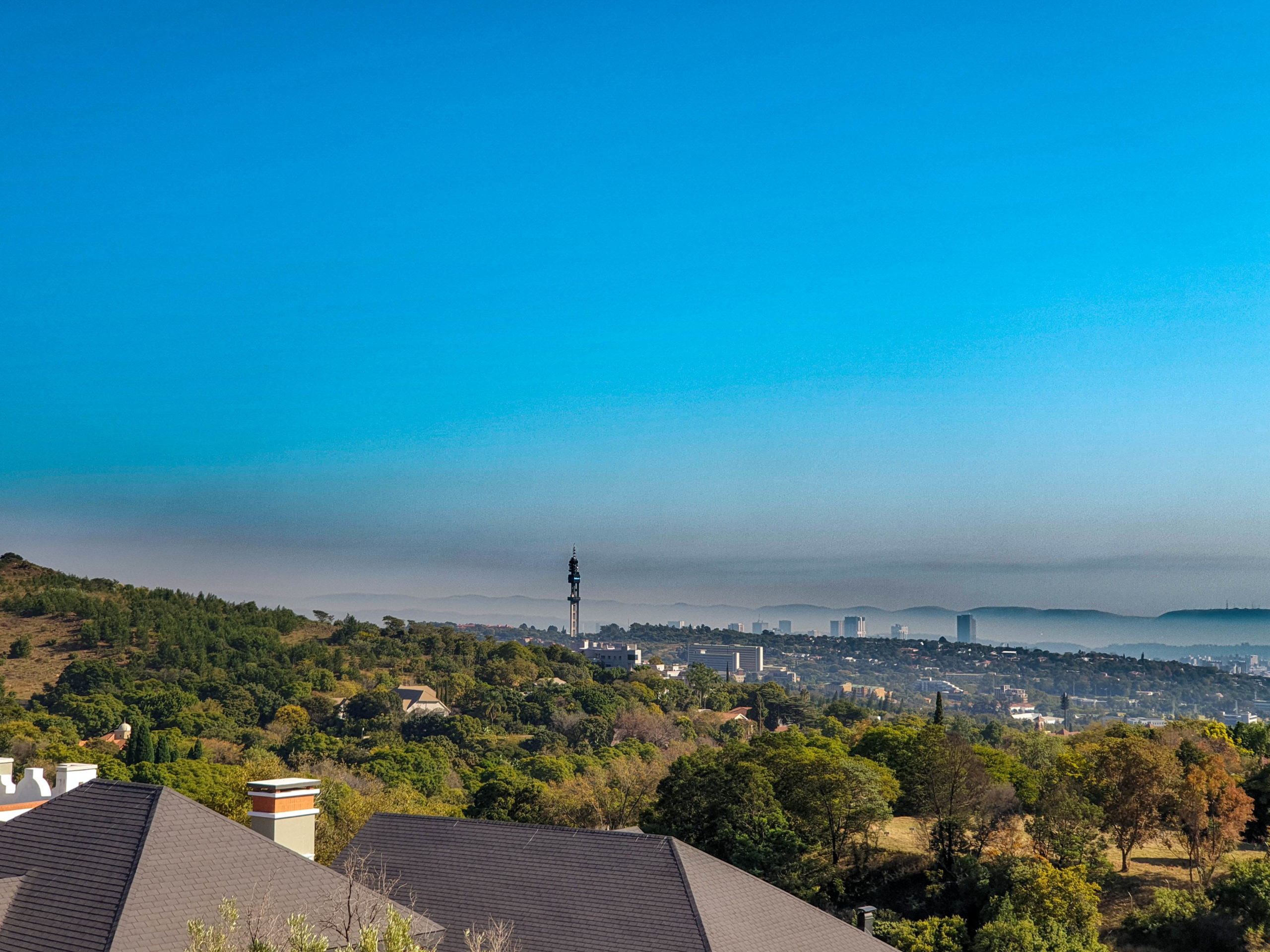
A view of Pretoria from the New Zealand Official Residence
Rain! We woke up this morning to a gentle shower. And despite growing up in Wellington, where it rains one day in every three, it took us a while to figure out what that strange pitter patter noise was coming from our roof. The reason: this is the first rain in Pretoria for over four months.
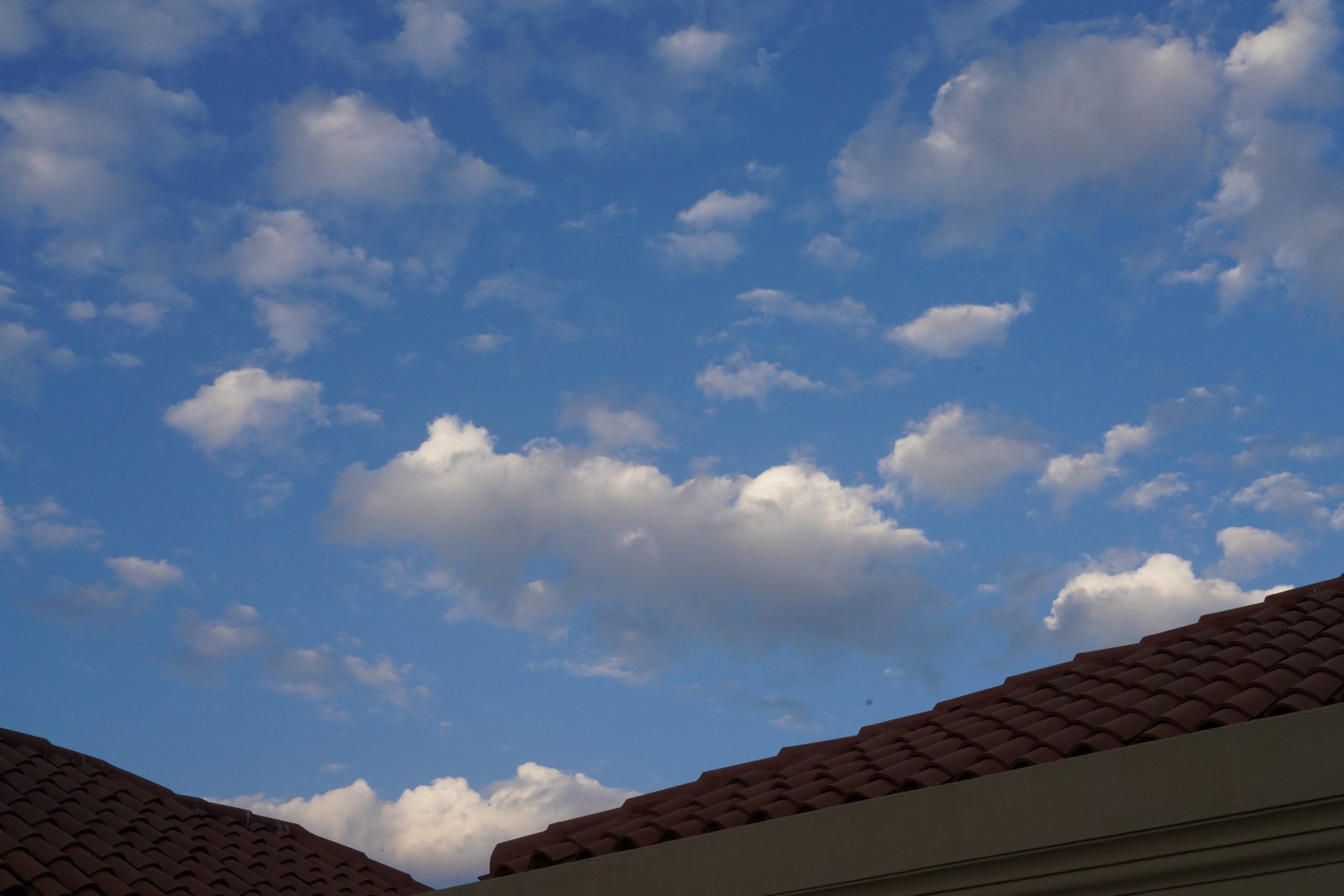
Strange white fluffy things seen in the skies over Pretoria
We are still in the Southern Hemisphere. So, like in NZ, it has been winter here; winter, Jim, but not as you know it. Pretoria winters are a monotony of dry, sunny days and equally dry, icy nights.
Almost every day is clear from horizon to horizon. The hot African sun beats down and, if you are standing under it, when there is no breeze, it gets hot by NZ standards. 24 °C would be a standard Pretoria day in the middle of winter.
When there is a breeze the wind is quite chilling. But for most of winter is has been completely still. They say here that August is the windy month. We have noticed some movement in the air. The NZ flag that usually lies limp against the flagpole outside the official residence has been flapping and proving to all that it is not really the Australian flag (or the flag of the Cook Islands, Turks and Caicos, Ascension, the Falklands, Anguilla, or any of the other near identical ones). But no day in August would have been described as “windy” by any self-respecting Wellingtonian.
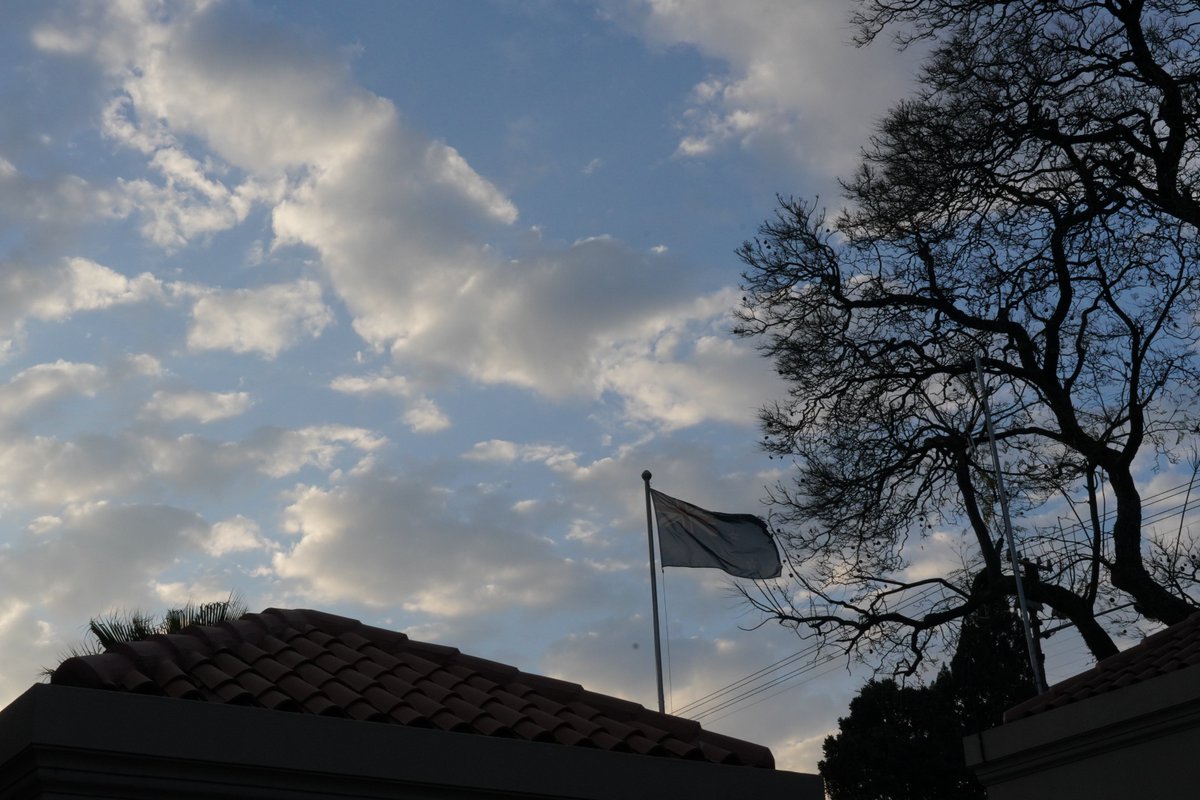
The New Zealand flag flapping in some rare Pretoria breeze
At nights, however, when the sun has gone and at high altitude and with no cloud layer or nearby ocean to hold in the warmth, it can get cold. 2 °C was common, and when a cold front came through it dropped below freezing. I have never lived anywhere before with such large diurnal temperature variations.
The cold nights also brought a noticeable drop in air quality.
Many shacks in the informal settlements have little to no insulation. To keep warm, their occupants use home-made coal fires. At dawn, you can see plume upon plume of black smoke rising from these inefficient burners.
The wealthier residents, with their electric heating, contribute to the haze indirectly. 69% of South Africa’s electricity production comes from coal fired plants. North of here, there are some large power stations putting out large centralised billows of smoke.
The dry weather means that any vegetation that is not being routinely watered (and water is scarce) quickly turns to a crisp light brown. Accidental fires are common and can be devastating. To avoid them, people proactively light controlled fires. For weeks in the middle of winter, it feels like the whole of Gauteng is on fire. Driving down the motorway, there were fields ablaze in every direction we looked.
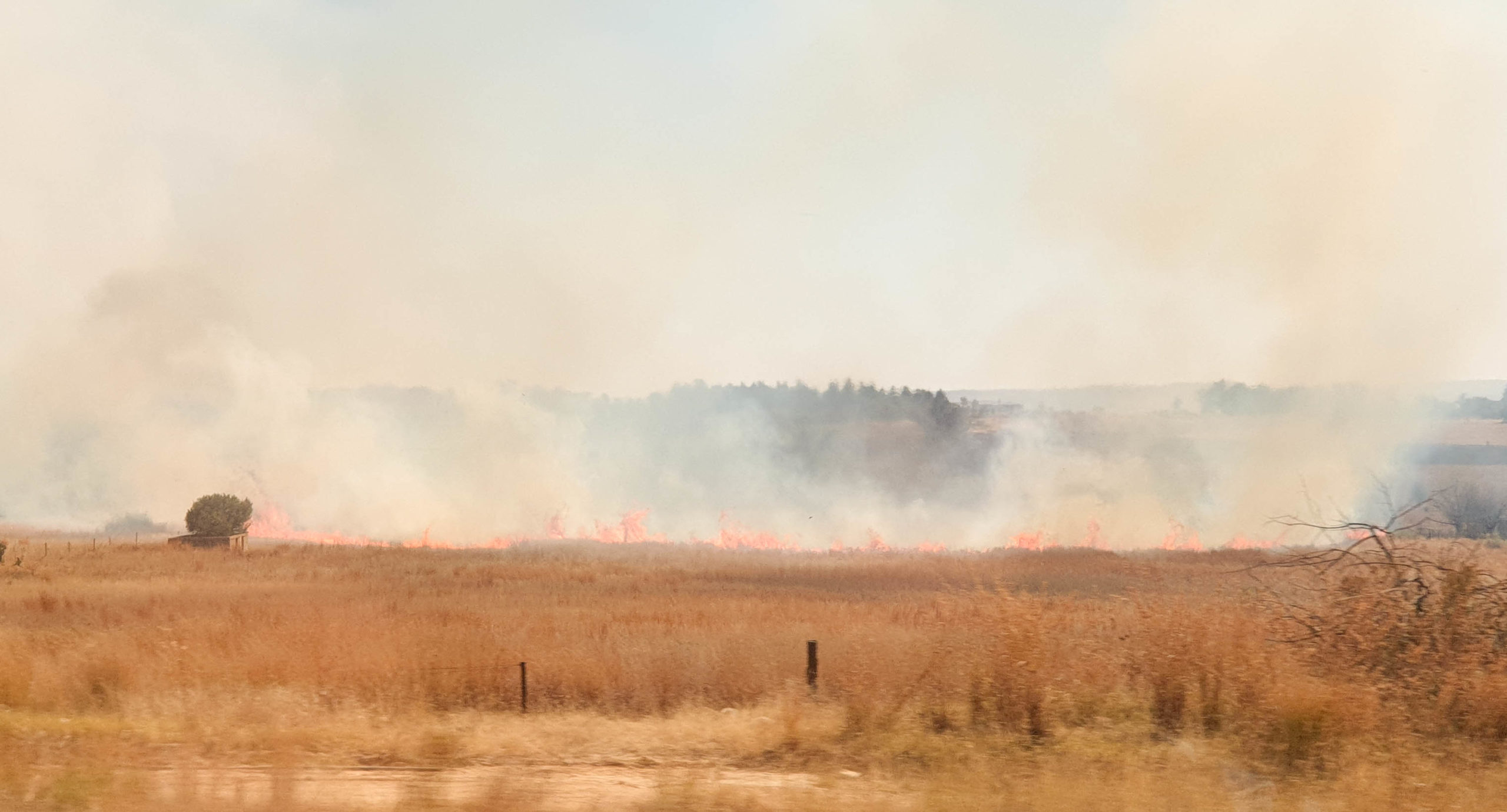
The whole province on fire, deliberately
We set out, one day, for what we thought would be a nice walk along riverbank. But a few yards from the carpark we found the charred black remains of the bush. It was all that was left on both sides of the river after a fire, deliberately lit.
To top it off, through winter the braai, the South African barbeque, remains a popular way to cook the evening meal, not to mention the mid-day meal (if our neighbours and the large braai sections of the supermarkets are any indication).
All of this, and the complete lack of wind to take the smoke away, left the City sitting under a thick brown haze for much of the last few months.
The dry weather has some other quirks for people from relatively waterlogged New Zealand. The humidity levels here take a dive. I gave up hygrometer watching early on in winter after I realised the one I was using at home was registering 30% only because that was the lowest it could measure. I remember seeing a figure of 22% in the local media one day and measurements in the 20s were common. Heating can make it worse indoors.
Things dry incredibly quickly. It is amazing what only a couple of minutes will do to your washing under a hot sun with almost no moisture in the air.

A nice winter stroll along a riverbank
Speaking of things drying incredibly quickly, I was not a fan of waking up every morning feeling like I had been through a dehydration machine. And in the Pandemic! With smoky air and zero moisture, I do not think there has been a day in the last 4 months when I did not wake up with at least one of the listed COVID symptoms.
There are devices you can get to ameliorate the worst of this. These were completely foreign to me. Like most Wellingtonians, I think, we have a dehumidifier going most of the time back home. Every few days a bucket of water taken from the air in the dampest corner of the house is poured into the garden. Thereby, we hope to avoid mildew or worse. Here, we have a device in each bedroom that is designed to put a bucket of water into the air each night. They help but, with the doors open so that we can hear the kids, they are attempting a Sisyphean task.
But nightly desiccation is not my least favourite feature of the Pretoria winter. That title has to go to the static.
With the low humidity comes extremely high levels of static build-up. Shockingly large! One cannot cross a room without building up enough charge to receive a noticeable jolt from the door handle on your way out, the tap as you go to wash your hands, the water as you go to wash your hands, the cutlery you pick up to eat, the fridge, the stove, your kids, or your spouse. I feel like the universe has been giving me some pandemic appropriate aversion training in not touching things.
Except, of course, the longer you wait to touch something the worse the jolt when you do. And it does not matter what your wear: socks or no socks, shoes or no shoes… there is no avoiding it. Do not get me wrong, it can vary the effect. Wear that nice light New Zealand merino top and you are just asking for each step you take to be accompanied by an audible zap.
You will think I am exaggerating. Barely. Getting up at night to use the en-suite could be a four-spark experience – two in each direction. I brace myself now each time I reach for a door handle. Ostiumtractophobia – look it up. It may be with me for the rest of my life.
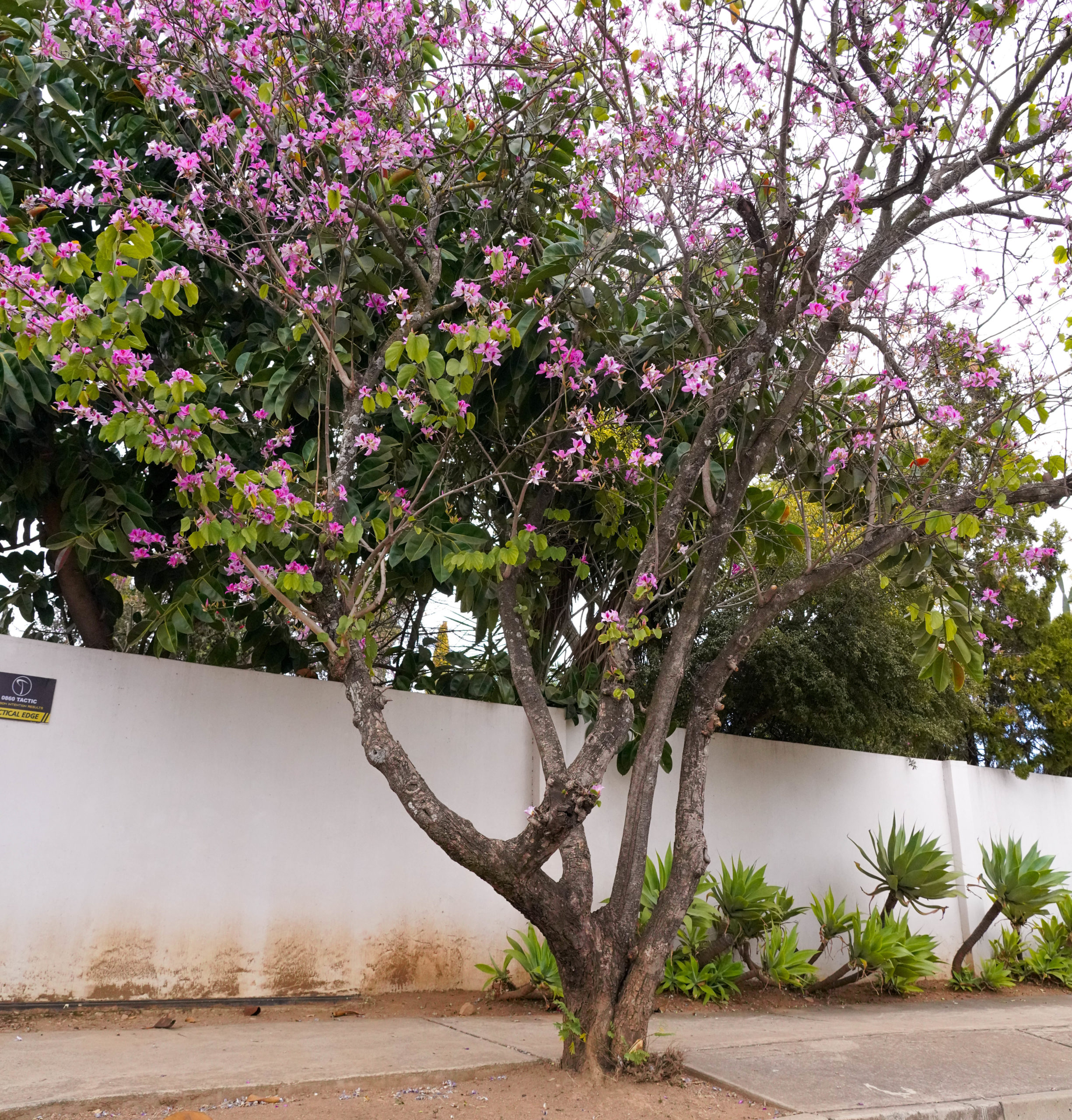
A sign that spring may have arrived
But the ones who have it worst are the cats. Fur is the worst thing to wear in this weather. Stroking them produces a distinct crackling noise with each pass. Do it at night with the lights off and you can see tiny flashes of light dancing under your hand. I am not making this up. My usually ultra-snuggly silver tabby now wrinkles her nose and braces herself if I reach out for a pat.
So, is it all over now? We knew something odd was happening when strange white fluffy things appeared in the skies earlier in the week. The breeze that is finally here is no longer chilling, and there are other signs that spring may have arrived. But the hygrometer’s needle has not yet made it off the bottom.
